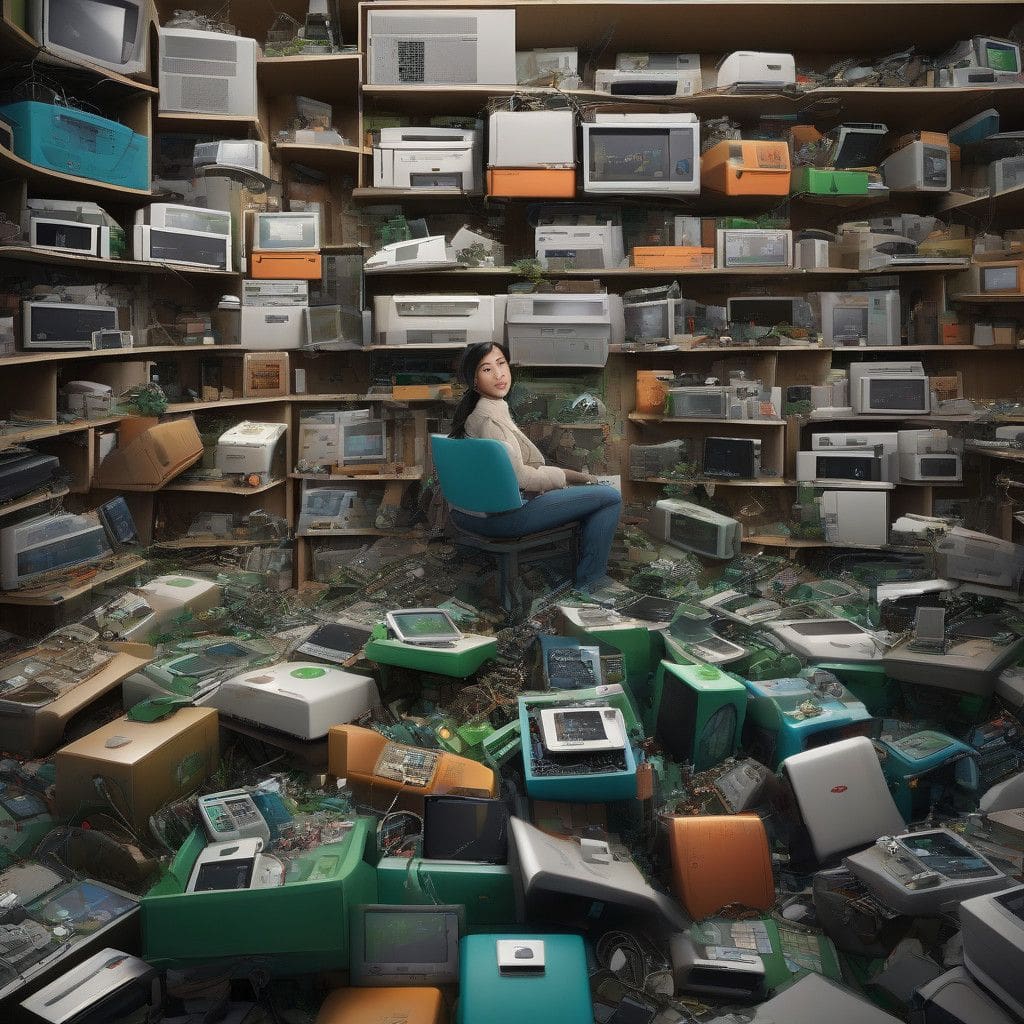As global consumption of electronic devices continues to rise, the challenges associated with electronic waste, or e-waste, have become increasingly significant. According to the Global E-waste Monitor 2024, a joint effort by UNITAR and ITU, a staggering quarter of end-of-life and unused electronics end up discarded. This not only represents the loss of valuable resources but also poses a pressing environmental challenge that warrants immediate attention.
In 2022, approximately 14 million tonnes of e-waste—defined as dead or unused products that have a battery or plug—were carelessly tossed into ordinary household waste. To visualize this quantity, consider that it equates to the weight of around 24,000 of the world’s heaviest passenger aircraft. If you lined these planes up, they could create an unbroken queue stretching from major cities like London to Helsinki, New York to Miami, Cairo to Tripoli, and Bangkok to Calcutta. Such staggering statistics underscore the gravity of the e-waste crisis, which many individuals overlook in their daily lives.
Pascal Leroy, Director General of the Waste Electrical and Electronic Equipment (WEEE) Forum, points out that small electronic and electrical devices are ubiquitous today. “Small electronic and electrical goods such as mobile phones, toys, remote controls, game consoles, headphones, lamps, screens and monitors, heating and cooling equipment, and chargers are everywhere,” Leroy noted. This prevalence is indicative of the significant portion of e-waste originating from everyday items that often end up neglected and discarded.
One notable statistic highlights the issue: in 2022 alone, 844 million e-cigarettes were thrown away, containing enough lithium to power 15,000 electric cars. When considering that globally, there are approximately 108 mobile phone subscriptions for every 100 people, it becomes clear that the sheer volume of unused electronics is enormous. In fact, surveys reveal that European households collectively store around 700 million unused or non-functioning mobile phones—averaging more than two per household.
The implications of this excessive accumulation of e-waste extend beyond lost economic value. The average European household is estimated to possess around 74 electronic products, including items like phones, tablets, laptops, electric tools, hair dryers, and even toasters (excluding lamps). Collectively, these devices harbor precious metals, valuable plastics, and other materials essential for the production of modern electronics. Yet, many households and businesses fail to recycle or repair their unused devices, leading to egregious waste.
So, what contributes to this alarming trend? A 2022 survey explored reasons why European households and businesses do not recycle their unused electronics. Commonly cited factors included lack of awareness of recycling options, uncertainty about how to properly dispose of devices, and minimal incentives for participating in recycling programs. Such barriers impede efforts to reduce e-waste and reclaim valuable materials that could be reused in future products.
In recognition of the urgent need for action, the WEEE Forum has initiated a campaign to encourage responsible e-waste management. They are inviting organizations to participate in awareness-raising activities on October 14, which will encompass a range of initiatives such as social media and television campaigns, school e-waste collections, and artistic performances. The campaign’s slogan, “Join the e-waste hunt—retrieve, recycle, and revive!” serves as a rallying cry for consumers to recognize the value trapped within their discarded electronics.
The message is clear: by engaging in responsible e-waste management and recycling, individuals can significantly contribute to reducing pollution and preserving valuable resources. Furthermore, recycling e-waste can lead to energy and CO2 savings, combating climate change in the process. For instance, repurposing metals like copper and gold from e-waste lessens the need for mining, a process that is both energy-intensive and environmentally damaging.
As we become increasingly reliant on technology, it is vital to understand the importance of handling e-waste responsibly. By fostering greater awareness around the recyclability of these materials and the potential financial savings associated with reclaiming them, we can change consumer behavior for the better. This effort goes beyond individual responsibility; it encompasses corporate accountability as well.
Businesses can lead the way by adopting circular economy principles and implementing effective e-waste management strategies. Companies that innovate their design processes to facilitate easier recycling or that offer take-back programs can significantly lessen their environmental impact while also appealing to eco-conscious consumers. The push for sustainability is not just a trend; it’s becoming a vital part of corporate strategy.
Ultimately, success in mitigating the e-waste crisis requires collaboration among consumers, governments, and businesses. Through education and collective action, we can create a more sustainable future that prioritizes resource recovery. With billions of dollars’ worth of materials going to waste each year, there has never been a more critical moment to recognize the hidden value in e-waste.
Let’s not squander the opportunity to capture this potential and shift the tides of waste towards a more resourceful future. The e-waste hunt is on, and it’s time to join in.










